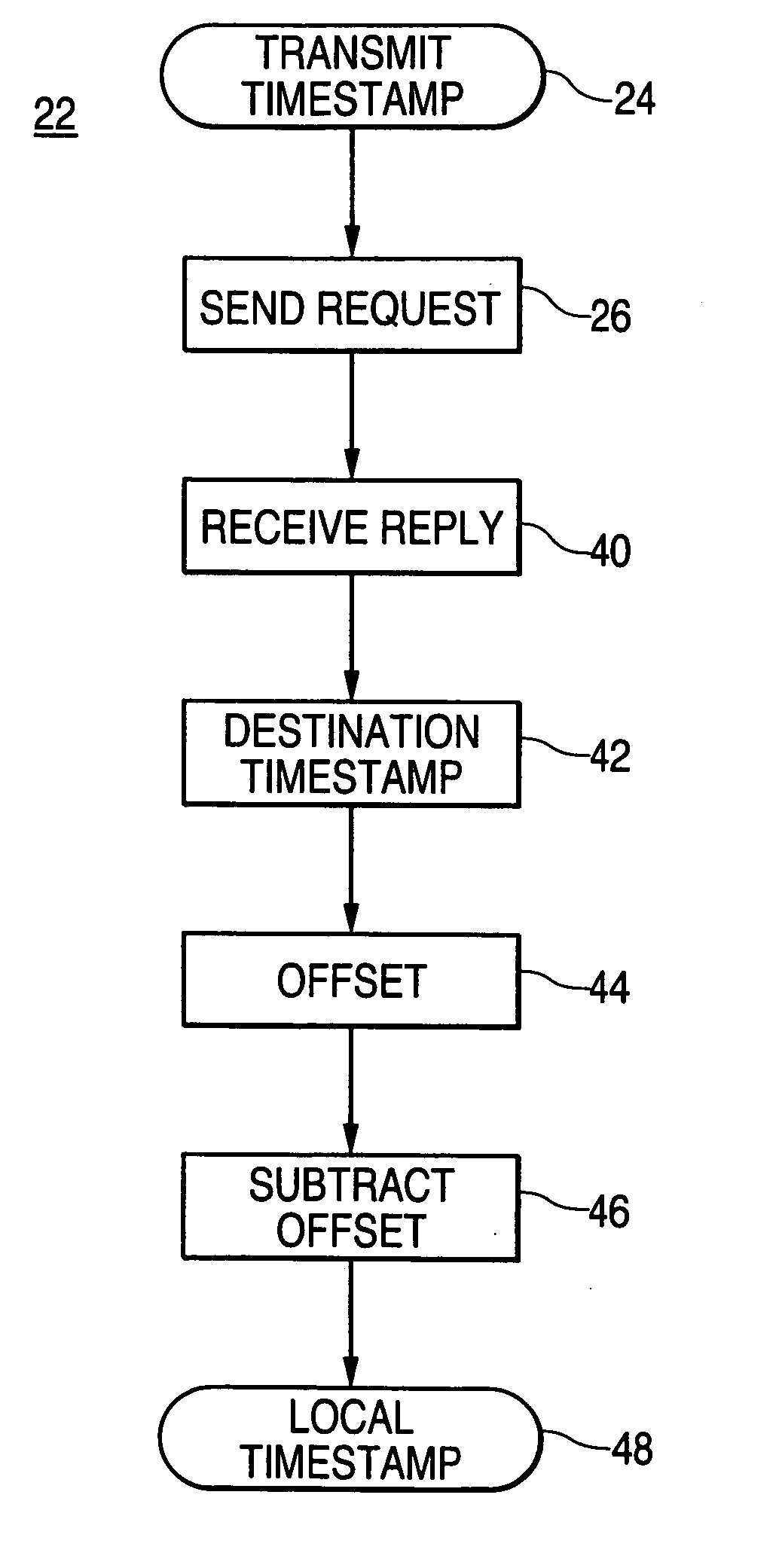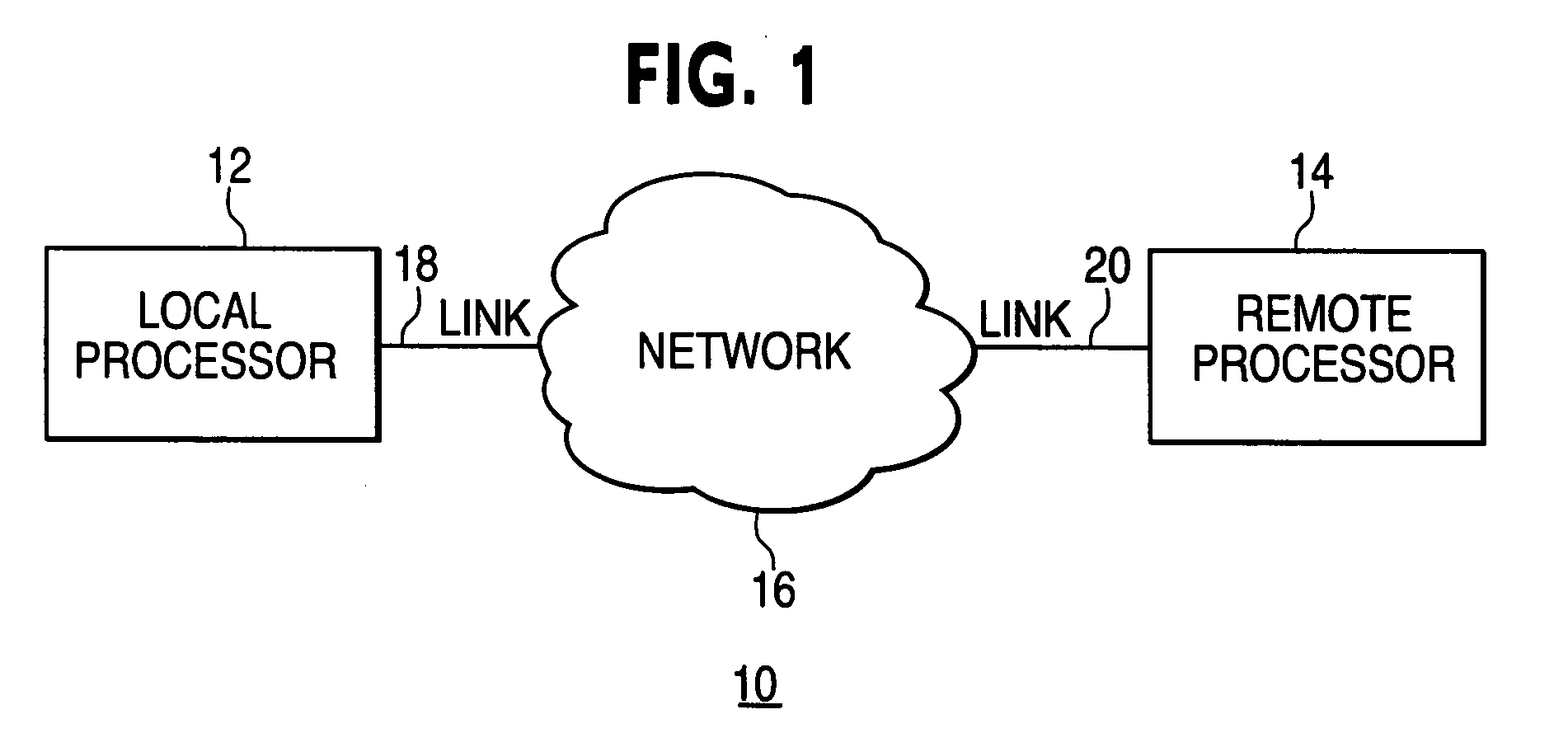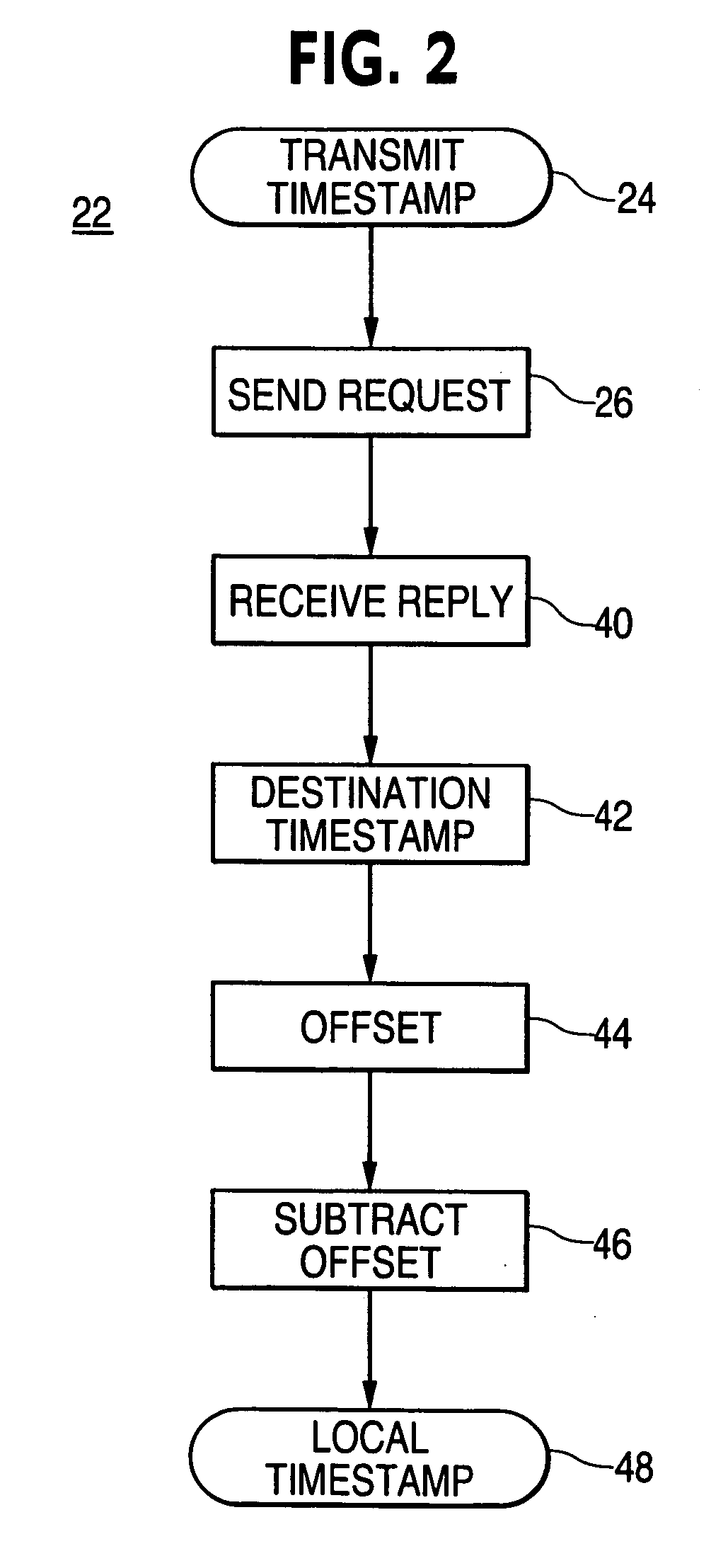Localizing a remote event timestamp from a network device with an independent clock method and apparatus
- Summary
- Abstract
- Description
- Claims
- Application Information
AI Technical Summary
Problems solved by technology
Method used
Image
Examples
Embodiment Construction
[0017] The invention will now be described with reference to the drawing figures, in which like reference numerals refer to like parts throughout. For the purposes of this discussion, the time according to the clock in the local processor 12 will be referred to as local time and the time according to the clock in the remote processor 14 will be referred to as remote time. An embodiment in accordance with the present invention provides a local computer or processor, a remote computer or processor, and a network linking the local computer and the remote computer. A request message is sent from the local computer to the remote computer containing a local transmit timestamp. A reply message is then sent from the remote computer to the local computer containing an originate timestamp, a receive timestamp, a remote transmit timestamp and a remote event timestamp. Upon receiving the reply message, the local computer sets a destination timestamp and calculates a local timestamp that corresp...
PUM
 Login to View More
Login to View More Abstract
Description
Claims
Application Information
 Login to View More
Login to View More - R&D
- Intellectual Property
- Life Sciences
- Materials
- Tech Scout
- Unparalleled Data Quality
- Higher Quality Content
- 60% Fewer Hallucinations
Browse by: Latest US Patents, China's latest patents, Technical Efficacy Thesaurus, Application Domain, Technology Topic, Popular Technical Reports.
© 2025 PatSnap. All rights reserved.Legal|Privacy policy|Modern Slavery Act Transparency Statement|Sitemap|About US| Contact US: help@patsnap.com



